When people generally sit together at a friend’s meetup party or any family gathering, if the subject is about fruits and their health benefits, like someone talking about common fruits, and another person says that exotic fruits and rare fruits are healthiest, and someone says that the citrus fruits are more tasty and most nutritious.
If we consider fruit, every fruit has unique characteristics and benefits. Imagine biting into a fruit that looks like a tiny orange but tastes with a tart surprise, or zesting a fruit that smells like a dreamy mix of lemon blossoms and lavender.
You are right, we are talking about citrus fruits. Still, not common citrus fruits, we are discovering uncommon citrus fruit varieties. The unusual citrus fruits are nature’s real treasures in the fruit world. Unique citrus fruit varieties offering bold flavors, vibrant colors, and exciting textures that can transform your meals, drinks, and even your home’s vibe.
This guide will take you through the zesty world of Uncommon Citrus Fruits Varieties, why they are worth trying, and how to use them to spice up your life. Ready for a tangy adventure?
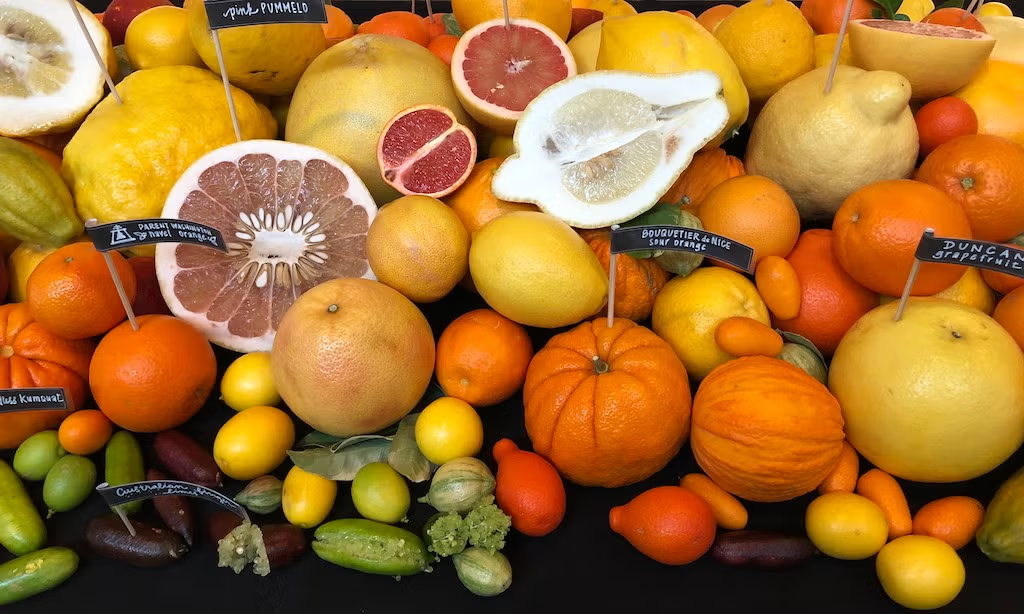
- Why you should try Uncommon Citrus Fruit Varieties:
- A List of 12 Uncommon Citrus Fruit Varieties:
- Table showing Nutrition & Health benefits of Citrus fruits:
- Uncommon Citrus Fruits in California: A Local Treasure:
- Sub Citrus Fruits: Understanding Hybrids and Mutations:
- How to Identify Uncommon Citrus Fruit Varieties:
- Growing Your Own Uncommon Citrus Fruit Varieties:
- Why You Should Buy Uncommon Citrus Fruit Varieties Now
- FAQ: Exploring Uncommon Citrus Fruit Varieties:
Why you should try Uncommon Citrus Fruit Varieties:
Generally, citrus fruits such as oranges, lemons, and limes are kitchen staples. Still, when we talk about uncommon citrus fruit varieties, we are referring to those that bring something extra special to your kitchen. These citrus fruits are full of unique flavors, such as sweet-tart, and contain more vitamin C, antioxidants, and many nutritional and health benefits.
Do not forget that these citrus fruits are super versatile, such as perfect for cooking, baking, juicing, or even decorating your sweet home.
If you’re still wondering why you should try unusual citrus fruit varieties, then take the story of Sheeza. She was stuck in a fruit rut, grabbing the same old oranges every time.

But one day she visited a local farmers’ market and discovered one of the varieties of unique citrus fruit, “kumquats”. She says that the sweet peel and tart inside taste blew her mind! Now she’s hooked, tossing Uncommon Citrus Fruits Varieties into everything from smoothies to salads.
A List of 12 Uncommon Citrus Fruit Varieties:
Your curiosity increased to discover uncommon citrus fruit varieties because these unique, unusual, exotic citrus fruits are perfect for adding zest to your life. Here is the top 12 rare citrus fruits list for you with their characteristics.
1. Buddha’s Hand Citron:
Maybe you were surprised when you saw a yellow octopus with wavy finger-type fruit in a fruit market. That is the Buddha’s hand citron. This uncommon citrus fruit variety has no juice or a pulp, but it tastes thick, sweet, with pith and zest bursting with a floral scent that makes you love it. Its aroma is reminiscent of lemon blossoms crossed with lavender.
The Buddha’s hand citron fruit is native to the Himalayas, and it’s been used in Asia for centuries to perfume rooms. It is considered a lucky charm in Buddhist temples.
Flavor and Uses of Citron:
The Buddha’s Hand is all about its zest and pith. Unlike regular citrus, the pith isn’t bitter, so that you can use the whole fruit! Grate the zest into salad dressings, candies, or cocktails for a zingy kick.
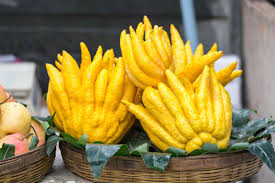
How to Use Buddha’s Hand (Step-by-Step)
- Choose a Ripe Fruit: Pick a bright yellow Buddha’s Hand with smooth, firm skin at a farmers market or specialty grocer.
- Wash It: Rinse under cold water to clean.
- Zest or Slice: Use a microplane for zest or slice the “fingers” thinly for cooking or candying.
- Store It: Wrap in plastic and refrigerate for up to two weeks.
- Try a Recipe: Mix zest into a vinaigrette or candy slices for a sweet treat.
2. Yuzu Citrus:
If you love lemons but want something bolder, then you must try Yuzu. This Japanese Uncommon Citrus Fruit Variety tastes like a mix of lemon, mandarin, and grapefruit. Yuzu fruit is the top choice of chefs because it is a favorite for its tart, floral flavor and fragrant rind. Yuzu fruit has been used in Japan for over a thousand years in cooking and even hot baths.
Yuzu Citrus Fruit Flavor and Uses:
Yuzu has a zesty taste and has grapefruit-like tartness with mandarin sweetness. Its rind and juice shine in sauces, desserts, and cocktails. I tried a Yuzu sorbet at a restaurant, and it was like tasting sunshine—refreshing and unforgettable.
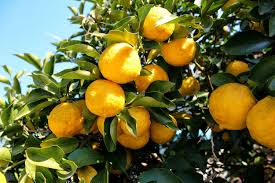
How to Use Yuzu:
- Where to Find it: You will find yuzu fruit in Asian fruit markets or online fruit stores.
- After buying: The first and most important thing to do is wash the fruit, then zest the rind or squeeze the juice, according to your recipe.
- Cook with It: One of the best uses of Yuzu is adding juice to fish marinades or zest to cakes and ice cream.
- For Future use: Refrigerate fresh Yuzu for up to a month or freeze juice in ice cube trays.
3. Pomelo Citrus:
Ever been surprised seeing a fruit as big as a volleyball? It’s Pomelo fruit, an Uncommon Citrus Fruit Variety and ancestor to grapefruits. Grown in Southeast Asia, California, and Florida, Pomelos are sweeter than grapefruits with less bitterness. The fruit is perfect for salads, salsas, or snacking.
Flavor and Uses:
Pomelos taste range from tangy-tart to spicy-sweet, with flesh from light yellow to deep pink. The thick rind is often candied, while the flesh adds a juicy crunch. My cousin made Pomelo marmalade last winter, and it was the best topper I have ever tasted! Pomelos are a delicious, healthy way to mix up your fruit game.
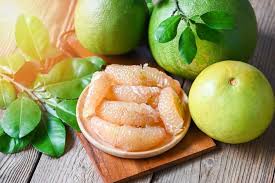
How to Use Pomelo citrus fruit:
- Pick a Good One: Choose a heavy, firm Pomelo at a supermarket or farmers’ market.
- Peel It: Cut off the thick rind and pith to reveal the flesh.
- Segment It: Break into segments or scoop out for salads or snacks.
- Store It: Refrigerate for up to a month.
4. Tangelo Citrus:
It looks the same as an orange, but it’s not. It’s a tangelo, a citrus fruit that is a juicy hybrid of tangerines and Pomelos, or grapefruits, with a sweet flavor and tart kick. Generally, people confuse them because they look like oranges, but tangelos have an easy-to-peel shape that kids love.
Flavor and Uses:
Tangelos are sweet with a tangy aftertaste. It’s great for making juices, snacks, or salads. They’re perfect for smoothies or as a mandarin substitute.
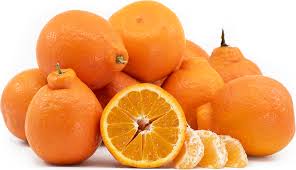
How to Use Tangelo fruit:
- Select It: Always pick firm, bright Tangelos from local stores or online fruit services.
- Peel It: Their loose skin peels easily.
- Enjoy it: Eat fresh, make the healthiest juices, or add to fruit salads.
- Store It: Refrigerate for up to three weeks.
5. Finger Lime:
Now we discover another citrus fruit that at first looks like a cucumber. Still, it is a famous Australian citrus fruit, the Finger lime. This unique citrus variety has tiny green gherkins filled with line “caviar”. It has juicy pearls that burst with tangy flavor. Finger lime citrus fruit ranks high in garnishes and desserts, because world-famous chef Rene Redzepi recommends it for recipes.
Flavor and Uses:
Finger Limes taste like regular limes but have a unique, poppable texture. The fruit is ideal for seafood, salads, or ice cream. Usually, people tried them on avocado toast, and it was a flavor explosion!
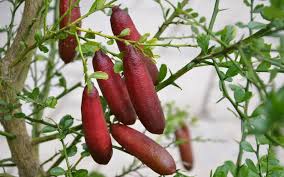
How to Use Finger Lime citrus fruits:
- Find Them: Check specialty grocers or farmers’ markets.
- Cut Them: Slice lengthwise to reveal the pearls.
- Use Them: Sprinkle over dishes for a tangy garnish.
- Store Them: Refrigerate for up to three weeks.
6. Calamansi Lime:
We could include another variety of uncommon citrus fruit, such as Calamansi Limes, also known as Philippine limes. These fruits look like mini oranges but pack a sour punch with a sweet, floral peel. Calamansi fruits are a staple in Filipino cuisine.
Taste and Uses:
Calamansi blends lemon, kumquat, and lime flavors, perfect for marinades, juices, or desserts. Most food lovers prefer calamansi juice with Bistek, and it is usually a family favorite.
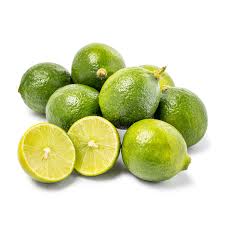
Uses of calamansi fruit :
- Source It: Find at Asian markets or online fruit markets.
- Juice It: Cut in half and squeeze out the sour juice.
- Use It: Add to sauces, make delightful drinks, or prepare delicious desserts.
- Store It: Refrigerate for up to a month.
7. Unique Meyer Lemon citrus:
The well-known chef and author of California, Alice Waters, says” Meyer Lemons are the dream of every chef” because of their sweeter, less acidic, and floral characteristics compared to other regular lemons.
Taste and Uses:
Meyer Lemons have a delicate sweet-tart flavor, great for salads, desserts, or roasting. Many restaurants offer Meyer Lemon pie as a hit at any occasion or gathering—everyone wanted seconds!
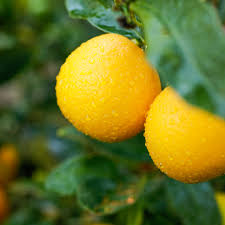
How to Use Meyer Lemon (Step-by-Step):
- Pick It: Choose smooth, bright Meyer Lemons at markets or online.
- Zest and Juice: Use rind and juice for maximum flavor.
- Cook It: Try in dressings, cakes, or savory dishes.
- Store It: Refrigerate for up to a month.
8. Bergamot Orange:
The Bergamot oranges, usually known as a fragrant citrus fruit, resemble oranges. Still, they range in color from yellow to green, just like limes, depending on ripeness. These uncommon citrus fruit extracts are used in many different products, such as perfumes, cosmetics, food, and tea, because of their aromatic ingredients.
Flavor and Uses:
Bergamot has a lime-like tartness with floral notes. Its oil adds depth to dishes. Most people remark that after trying Bergamot marmalade, the comments are that it was like spreading sunshine on toast.

How to Use Bergamot Citrus Fruit:
- Find It: Look at specialty stores near you.
- Zest It: Use the rind; the flesh is very sour.
- Cook It: Make jams, pastries, or infuse into oils.
- Store It: Refrigerate for up to three weeks.
9. Kumquat Citrus fruit:
Let’s discover a very unique citrus fruit named Kumquat, which is native to China, and its name reflects the Chinese word “golden orange”.The fruit tastes tiny with sweet peels and tart insides, and it’s an edible citrus fruit.
Flavor and Uses:
Kumquats offer a sweet-tart balance when eaten whole. They are great in salads, preserves, or as snacks. Popping a few at a market was like a mini citrus party!

How to Use Kumquat (Step-by-Step)
- Choose Them: Pick firm, bright Kumquats at stores or online.
- Eat Whole: Wash and eat, seeds and all.
- Cook Them: Add to salads, make jams, or candy them.
- Store Them: Refrigerate for up to a month.
10. Blood Lime Citrus Fruit:
Blood Limes, a cross between red Finger Limes and Ellendale mandarins, have a vibrant red color and sweet-tangy flavor.
Flavor and Uses:
Blood Limes are sweet with a tangy edge, ideal for garnishes, jams, or desserts. A chef’s Blood Lime garnish on a dessert was Instagram-worthy.
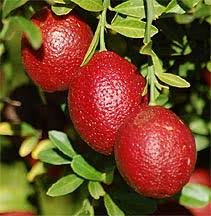
How to Use Blood Lime
- Source Them: Find at specialty retailers.
- Prep Them: Slice to reveal the vibrant flesh or scoop out pearls.
- Use Them: Add to desserts, cocktails, or garnishes.
- Store Them: Refrigerate for up to three weeks.
11. Cara Cara Orange:
Cara Cara Oranges, a Washington navel orange hybrid, are a medium-sized and seedless citrus fruit, with stunning salmon-pink flesh and a sweet, berry-like flavor.
Flavor and Uses:
Cara Cara Oranges are sweeter and less acidic than regular navel oranges, with hints of blackberries. This citrus fruit is great for making juices or salads. I made a Cara Cara mimosa once, and it was a brunch hit!
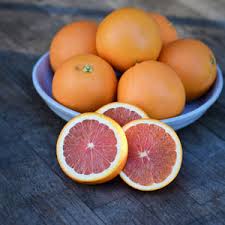
How to Use Cara Cara (Step-by-Step)
- Pick It: Choose firm, bright Cara Caras at nearby stores or online fresh fruit service stores.
- Peel It: Peel and segment for eating or juicing.
- Use It: Add to salads, smoothies, or cocktails.
- Store It: Refrigerate for up to a month.
12. Blood Orange:
Blood Oranges, also known as raspberry orange, are known for their purplish-red flesh and sweet, raspberry-like flavor. The blood oranges are an example of a natural mutation of the orange. According to fruit experts, it is a hybrid of pomelo citrus and tangerine citrus.
Flavor and Uses:
Blood Oranges are sweet and seedless, perfect for juicing, marmalades, or cocktails. A Blood Orange mimosa is the top recipe of well-known restaurants.
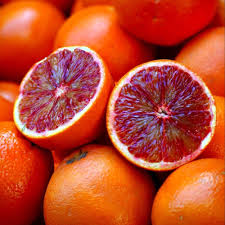
How to Use Blood Orange (Step-by-Step)
- Find It: Look at markets or online.
- Prep It: Peel, segment, or juice.
- Use It: Try in drinks, desserts, or fresh eating.
- Store It: Refrigerate for up to a month.
Table showing Nutrition & Health benefits of Citrus fruits:
| Citrus Fruit | Nutrition | Calories (per 100g) | Health Benefits | Unique Feature |
|---|---|---|---|---|
| Buddha’s Hand Citron | Vitamin C, dietary fiber, antioxidants, essential oils | ~20 kcal | Supports immunity, promotes digestion, reduces inflammation, mood-enhancing aroma | Shaped like yellow fingers; used mostly for fragrance and zest, not juice |
| Yuzu Citrus | Vitamin C, Vitamin A, flavonoids, potassium | ~20 kcal | Boosts immunity, supports skin health, improves circulation, anti-inflammatory | Highly aromatic; flavor between lemon, grapefruit, and mandarin |
| Pomelo Citrus | Vitamin C, potassium, fiber, antioxidants | ~38 kcal | Aids digestion, supports heart health, boosts immunity, may aid weight loss | Largest citrus fruit; thick rind with mild, sweet flavor |
| Tangelo Citrus | Vitamin C, folate, potassium, fiber | ~47 kcal | Improves immunity, supports prenatal health, aids digestion, hydration | Cross between tangerine and grapefruit; easy-to-peel skin |
| Finger Lime | Vitamin C, Vitamin E, folate, antioxidants | ~30 kcal | Enhances skin health, boosts immunity, supports cell repair, collagen production | Caviar-like juice vesicles; bursts in mouth with tangy flavor |
| Calamansi Lime | Vitamin C, calcium, potassium, flavonoids | ~37 kcal | Strengthens immunity, supports bone health, promotes skin healing, aids digestion | Small, tart-sweet lime widely used in Filipino cuisine |
| Meyer Lemon | Vitamin C, potassium, dietary fiber, antioxidants | ~20 kcal | Supports immunity, heart health, digestion, skin quality | Sweeter, less acidic than regular lemons; thin edible skin |
| Bergamot Orange | Vitamin C, polyphenols, potassium, antioxidants | ~36 kcal | Supports cardiovascular health, may lower cholesterol, boosts immunity, reduces stress | Known for its distinctive aroma; flavoring in Earl Grey tea |
| Kumquat | Vitamin C, fiber, Vitamin A, antioxidants | ~71 kcal | Supports digestion, boosts immunity, promotes eye health, provides lasting energy | Can be eaten whole, peel and all; peel is sweet, flesh is tart |
| Blood Lime | Vitamin C, anthocyanins, folate, potassium | ~30 kcal | Antioxidant-rich, improves blood health, boosts immunity, supports heart health | Hybrid of red finger lime and Ellendale mandarin; red skin and flesh |
| Cara Cara Orange | Vitamin C, lycopene, fiber, folate | ~53 kcal | Promotes skin health, supports heart health, aids digestion, boosts immunity | Pink-red flesh due to lycopene; sweeter and less acidic than navel oranges |
| Blood Orange | Vitamin C, anthocyanins, fiber, folate | ~47 kcal | Antioxidant protection, supports heart health, improves skin tone, reduces inflammation | Deep red flesh from anthocyanins; raspberry-like flavor notes |
Uncommon Citrus Fruits in California: A Local Treasure:
Uncommon Citrus Fruits in California thrive thanks to naturally the state’s sunny climate and innovative growers. From Los Angeles farmers markets to nurseries like Four Winds Growers, you’ll find Uncommon Citrus Fruits Varieties like Meyer Lemons, Finger Limes, and Yuzu.
Our one member Maria, a California native, swears by her local farmers market for Cara Cara Oranges and Blood Limes, which she uses in salads and cocktails.

Where to Find unique citrus fruits:
- Farmers Markets: Check Local Harvest for California markets.
- Specialty Stores: Whole Foods and Asian grocers stock Uncommon Citrus Fruits.
- Online: Melissa’s Produce ships fresh citrus (check shipping restrictions).
- Nurseries: Grow your own with trees from Four Winds Growers.
Why Buy in California?
Uncommon Citrus Fruits in California are fresher and often grown locally, ensuring peak flavor. Visit a market or order online to taste the California difference!
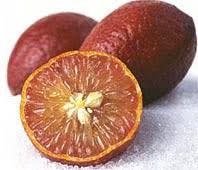
Sub Citrus Fruits: Understanding Hybrids and Mutations:
Sub Citrus Fruits are hybrids or mutations within the Citrus genus, often created by crossbreeding or natural genetic changes. These include Uncommon Citrus Fruits Varieties like ,Blood Oranges are natural mutation while Tangelos citrus, hybridization between (tangerine x Pomelo/grapefruit), Calamansi Limes, hybridization between (kumquat x mandarin), the sweet Cara Cara Orange is the hybrid result of Washington naval orange and Bahia naval of Brazilian, these are the some examples of understanding about hybrid and mutation citrus fruits.
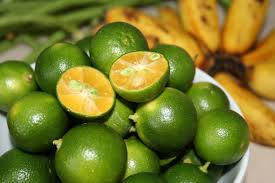
Examples of Sub Citrus Fruits:
- Tangelo: A juicy hybrid with sweet-tart flavor.
- Blood Lime: A cross of Finger Lime and Ellendale mandarin, with red flesh.
- Cara Cara Orange: A navel mutation with pink flesh.
How to Identify Uncommon Citrus Fruit Varieties:
Identifying Citrus Fruit is key to finding the best Uncommon Citrus Fruit Varieties at farmers’ markets or grocers. For your convenience, here’s a step-by-step guide to spot these exotic citrus fruits like an expert:
Ask the Vendor: At farmers markets or specialty grocers, ask about the fruit’s origin or variety. Vendors often know if it’s a Sub Citrus Fruit, like a hybrid or mutation.
Check the Shape and Size:
- Buddha’s Hand Citron: Yellow, finger-like projections with no pulp.
- Finger Limes: This citrus fruit is Small, gherkin-shaped with pearl-like vesicles inside.
- Pomelos: Large, volleyball-sized with thick rinds.
Examine the Color:
- Blood Oranges: Deep red or purple flesh under a typical orange peel.
- Cara Cara Oranges: Salmon-pink flesh inside a navel-like exterior.
- Variegated Pink Eureka Lemon: Green-striped rind and pink flesh.
Feel the Texture:
- Kumquats: These citrus are Small, firm, with edible, sweet peels.
- Yuzu: The fruit is Bumpy, aromatic rind with a grapefruit-like scent.
- Bergamot: Oily, glossy rind with a floral aroma.
Smell the Aroma:
- Meyer Lemons: Floral, herby scent compared to regular lemons.
- Calamansi Limes: Sweet peel with a sour, lemon-like juice.
- Palestine Sweet Lime: Mild, sweet aroma with minimal tartness.
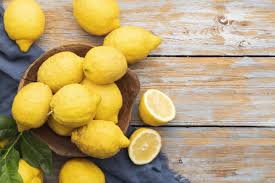
Growing Your Own Uncommon Citrus Fruit Varieties:
You are thinking of growing your citrus garden; therefore, I’d like to take your citrus obsession to the next level. Growing rare citrus trees is easier than you think! Many Uncommon Citrus fruit varieties, like Yuzu, Finger Limes, and Meyer Lemons, are cold-hardy and thrive in containers or backyards.
For your plantation of citrus fruits, a step-by-step guide to get started:
- Choose Your Tree: Pick a variety suited to your climate, like semi-dwarf citrus trees from Four Winds Growers.
- Find a Spot: Most citrus trees need full sun (6-8 hours daily) and well-draining soil.
- Plant It: Remember to dig a hole twice as wide as the root ball, plant, and water well.
- Care for It: Water weekly, fertilize with citrus fertilizer, and prune dead branches.
- Protect It: In colder zones, bring potted trees indoors during winter or cover outdoor trees.
Note: Some states, like California, Florida, and Texas, have citrus shipping restrictions to prevent pest spread, so check local laws before ordering.
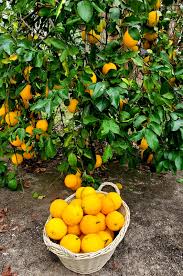
Why You Should Buy Uncommon Citrus Fruit Varieties Now
Uncommon Citrus Fruit Varieties are a ticket to flavor, health, and creativity. Here’s why you should add them to your cart:
- Unique Flavors: From Yuzu’s floral tartness to Kumquats’ sweet-tart crunch.
- Health Benefits: Packed with Vitamin C and antioxidants.
- Versatility: Use in cooking, baking, drinks, or decor.
- Wow Factor: Impress with vibrant colors and textures.
- Grow Your Own: Citrus trees are beautiful and productive.
Find these fruits at farmers’ markets, Whole Foods, Asian grocers, or Melissa’s Produce. For trees, visit Four Winds Growers. Don’t wait—start your citrus adventure today!
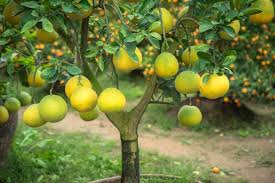
FAQ: Exploring Uncommon Citrus Fruit Varieties:
Got questions about Uncommon Citrus Fruits Varieties? We’ve got answers! Below, we dive into what makes exotic citrus fruits special, which oranges and lemons are the rarest, and which fruit has the least citrusy kick.
What is an Exotic Citrus Fruit?
An exotic citrus fruit is a type of citrus that’s less common than oranges, lemons, or limes. These fruits belong to the Citrus genus and have unique flavors, textures, or appearances. Examples include Buddha’s Hand Citron, with its finger-like shape, or Yuzu, with its tart, floral taste. Uncommon Citrus Fruit Varieties are often grown in regions like Southeast Asia, Australia, or California. They are prized for cooking, baking, or decor. Their rarity, unique traits, or cultural significance make them “exotic.” For instance, Finger Limes, called “citrus caviar,” have poppable pearls that chefs love for garnishes.
What is the Rarest Orange Fruit?
The rarest orange fruit in the Uncommon Citrus Fruits Varieties is the Bergamot Orange. This Italian citrus, a cross between a sour orange and a citron or lemon, has a tart, lime-like flesh and aromatic rind used in Earl Grey tea, perfumes, and jams. Its limited cultivation, mainly in Calabria, Italy, and niche uses make it rare.
What Fruit Has the Least Citrus?
The Palestine Sweet Lime, or Indian Sweet Lime, has the least citrusy flavor among Uncommon Citrus Fruit Varieties. This subcitrus fruit is sweet with low acidity, tasting almost melon-like. It’s great for drinks or snacking.

